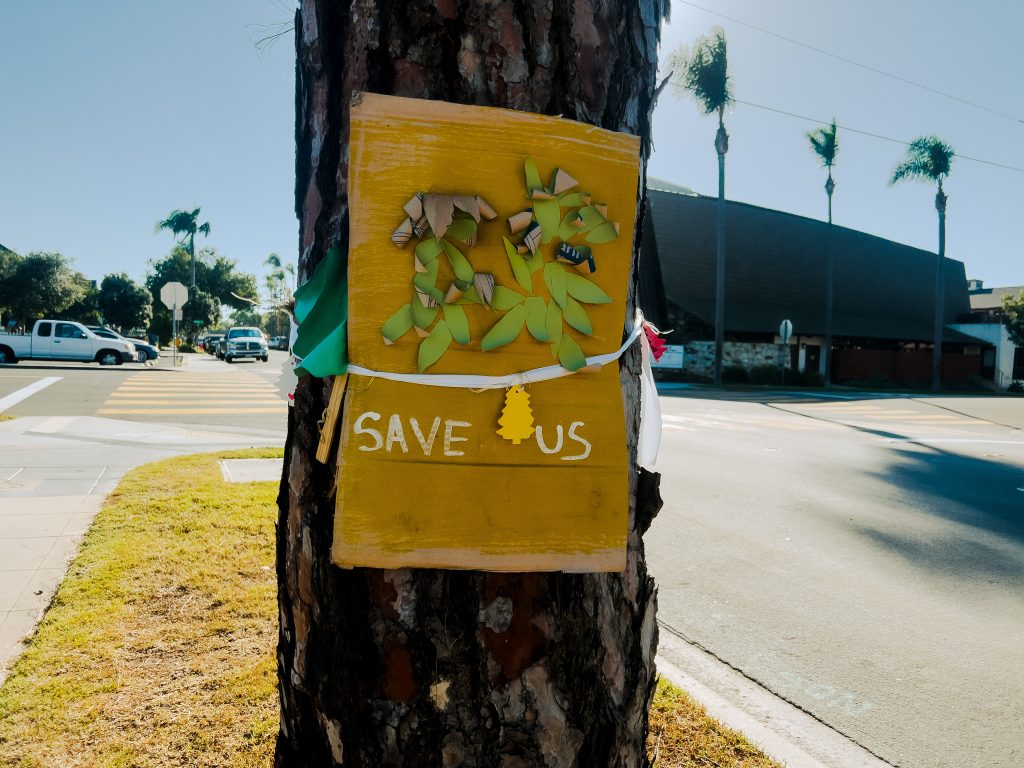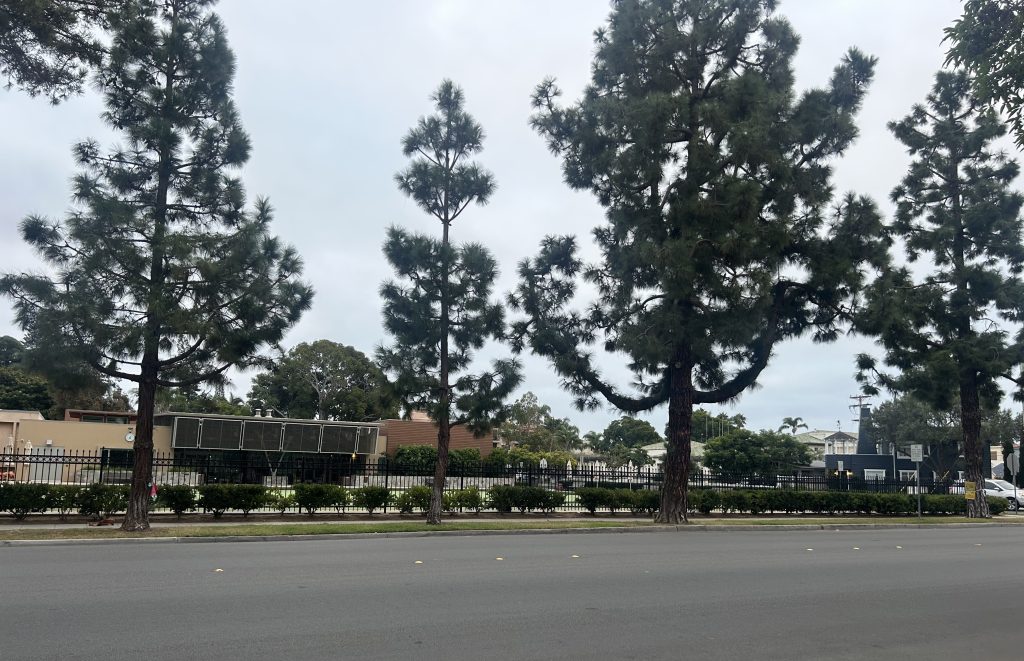
A judge granted an injunction against the City of Coronado, prohibiting it from cutting down four Canary Island pine trees and a leaning Torrey pine tree as a lawsuit protesting their removal works through the courts.
The suit contends that when the Coronado City Council voted to remove the trees in July, the city erroneously said the matter was exempt under the California Environmental Quality Act (CEQA), which requires, among other things, that the public be notified ahead of decisions regarding significant environmental changes.
“We are extremely pleased with today’s ruling,” said Christine Mott, an attorney and one of the petitioners of the lawsuit, hours after the Oct. 20 hearing. “In granting our motion, the court found that we have shown a likelihood of success on the merits of the case, including proving our allegation that the removal of the trees is not exempt from CEQA, as the city has claimed.”
By policy, the City of Coronado does not comment on ongoing litigation.

The trees in question line D Avenue and came under debate over the summer following the city’s July vote to remove them. Their roots host puffball fungus, which is destroying the artificial turf of the city’s lawn bowling green.
City staff called upon arborists and fungus experts in drafting its recommendation to remove the trees, saying mitigating the fungus was impossible and no alternative solutions were viable.
But some residents balked at their removal, saying an artificial turf was not more valuable than mature trees. Others said lawn bowling is an integral part of Coronado’s community and its older population’s health. Residents of both opinions showed up in force to speak during public comment at city council meetings.
The trees slated for removal range from about 10 to 50 years old. Following a protest of their removal, a petition has garnered 527 signatures from residents against the trees’ removal, Mott said. She and fellow petitioners Mary Beth Miliken and Shannon Player attended Friday’s hearing, alongside six other Coronado residents.
After public backlash, Council Member Casey Tanaka called for reconsideration, but after debating the matter again, city council ultimately decided to uphold its original decision.
What is the CEQA?
According to court documents, the case hinges on whether Coronado was correct in labeling this project as exempt under the California Environmental Quality Act.
All governing bodies in California must comply with CEQA before making a discretionary approval of a project. However, it is very common for agencies to declare agenda items as exempt under CEQA.
The law was designed to serve four purposes, as outlined on the California Department of Fish and Wildlife’s website:
- Disclose “significant environmental effects” of a proposed project to the public through an initial study, negative declaration, mitigated negative declaration, or environmental impact report.
- Develop project alternatives and mitigation measures and monitoring in effort to prevent or minimize damage to the environment.
- Disclose to the public how decisions regarding a project were made. Solicit public participation in the environmental review process through, among other things, public notice and public hearings.
- Improve interagency coordination through early consultations and other meetings.
What qualifies as a CEQA exemption?
The city asserted three types of CEQA exemptions for this project, court documents show. At last week’s hearing, the court determined that the lawsuit had a “likelihood of success” in proving that the CEQA exemptions did not apply, thus prompting the injunction ruling.
It’s important to note that this does not mean the court agreed with the lawsuit – only that the case had merit. By issuing the injunction, the city may not touch the trees until the case is resolved.
The three exemptions the city claimed are outlined below:
The first, a class one exemption, is for projects related to maintenance – not expansion – of public or private structures. The statute lists examples such as highways, sidewalks, and gutters as types of structures that may apply.
The city pointed to its municipal code, which says that tree removal falls under the umbrella of “maintenance.”
However, “based on (the city’s) own definition, tree removal is only part of tree maintenance if it promotes life or growth of public trees,” court documents say. “There is evidence on the record that the Torrey pine tree was unhealthy and or/detrimental to the health of the surrounding trees. However, (the city) has not identified any evidence supporting its determination that the removal of the Canary Island trees qualifies as tree maintenance promoting life or growth of public trees.”
The second, a class two exemption is relevant when a governing body replaces or reconstructs a structure in the same spot and with “substantially the same capacity and purpose.”
The lawsuit alleges that this does not apply to street trees and that, even if a tree counts as a structure, there is insufficient evidence on the record that the tress will be sufficiently replaced.
(City Council said in meetings that it will replace the trees, but had not yet decided what to replace them with, and staff noted that sometimes replaced trees would not be placed in exactly the same spot. Further, public commenters decried a backlog of trees that were removed and not replaced, even a year later.)
The court ruled that, because the city deferred selecting the types and locations of replacement trees, this exemption may not apply.
The third, a class four exemption, “consists of minor public or private alterations in the condition of land, water, and/or vegetation which do not involve removal of healthy, mature, scenic trees except for forestry and agricultural purposes,” the state statute reads.

The city argued that the trees are not healthy, not only because they feed the fungus in their root system, but also, because the fifth tree, a leaning Torrey pine, is unhealthy and puts nearby trees at risk.
However, “the project is only exempt if all five trees meet the exemption criteria,” court documents read. “Because (the city) does not contend that the four Canary Island pines are unhealthy, Petitioners have shown a likelihood of success in proving that the project does not fall under a Class Four Exemption.”
As a result of the injunction, the city cannot remove the trees until courts determine whether the project truly is exempt under CEQA.
At the hearing, city officials argued that the city should at least be able to move forward with phase one of its project – installing root barriers to prevent the trees’ roots from spreading beneath the lawn bowling turf – but the court rejected the request.




